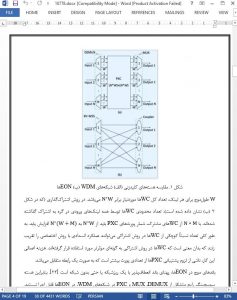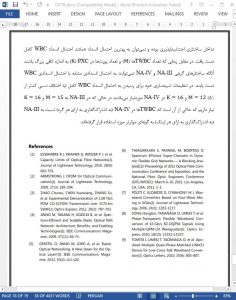Abstract
In Elastic Optical Networks (EONs) with flexible bandwidth allocation, the blocking probability is high because of spectral contention. Similar to the functionality of wavelength conversion in Wavelength-Division-Multiplexing (WDM) networks, waveband conversion has been proposed to solve spectral contention in EONs. In this paper, we discuss the design of node architectures for an EON with waveband conversion. Four node architectures with shared Tuneable Waveband Converters (TWBCs) are proposed, and their blocking performances are evaluated by simulation. Simulation results show that the blocking probability of a node is significantly improved by waveband conversion. The sharing efficiency of waveband converters is also investigated. Simulation results show that at the same blocking rate, the node architecture with converters shared per node can save more than 20% waveband converters compared with that of the one with converters shared per link.
I. INTRODUCTION
As the rapid growth of online population and the explosion of new applications, the Internet traffic is believed to keep increasing and the bandwidth requirements are more variable. On the other hand, the optical network which supports the Internet traffic is gradually approaching its physical capacity limit [1]. In traditional Wavelength-Division-Multiplexing (WDM) network, the minimal granularity is a wavelength (100 or 50 GHz), which is not fine enough for efficient bandwidth allocation. With the progress in optical transmission technologies, such as Orthogonal Frequency Division Multiplexing (OFDM) [2] and Single-Carrier Frequency Division Multiplexing (SCFDM) [3], the elastic optical network [4-5] has been proposed to support flexible bandwidth allocation at much finer granularity (10 GHz or less). Furthermore, the spectrum efficiency in Elastic Optical Networks (EONs) is high with small guard bands as subbands are all orthogonal.
V. CONCLUSION
The node architectures for EONs with waveband conversion were discussed in this paper. Based on the placement and sharing schemes of TWBCs, four node architectures were proposed and their performances are compared by simulation.











